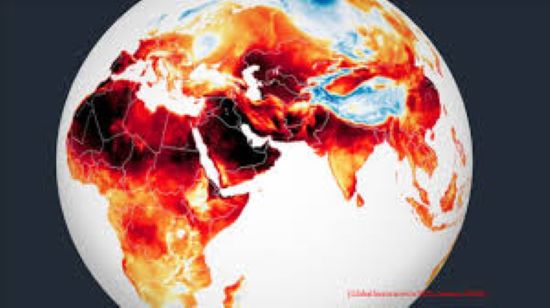The United Nations has raised fresh alarm over the growing threat of extreme heat to workers’ health and livelihoods, warning that climate change is fuelling dangerous conditions across industries.
In a joint report released on Friday, the World Health Organization (WHO) and the World Meteorological Organization (WMO) said heat stress is fast emerging as one of the biggest occupational health risks globally.
The report, Climate Change and Workplace Heat Stress, highlights how longer, more frequent, and more intense heatwaves are reshaping the world of work. It notes that workers in agriculture, construction, and fisheries are already bearing the brunt of soaring temperatures, with vulnerable groups in developing countries—such as children, older adults, and low-income communities—facing the greatest risks.
“Heat stress is already harming the health and livelihoods of billions of workers, especially in the most vulnerable communities,” said Dr. Jeremy Farrar, WHO Assistant Director-General. “This new guidance offers practical, evidence-based solutions to protect lives, reduce inequality, and build more resilient workforces in a warming world.”
According to the WMO, 2024 was the hottest year on record, with global temperatures averaging 1.55°C above pre-industrial levels. Daytime highs of over 40°C are now commonplace, and in some regions, temperatures have even surpassed 50°C.
“Occupational heat stress has become a global societal challenge, which is no longer confined to countries close to the equator – as highlighted by the recent heatwave in Europe,” said Ko Barrett, WMO Deputy Secretary-General. “Protection of workers from extreme heat is not just a health imperative but an economic necessity.”
The report warns that worker productivity falls by 2–3% for every degree above 20°C, with health consequences ranging from heatstroke and dehydration to kidney damage and neurological disorders. Nearly half of the world’s population is now affected by excessive heat exposure.
The WHO and WMO guidance calls for urgent action, including:
- Developing occupational heat-health policies tailored to local weather and workforce conditions.
- Protecting middle-aged and older workers, as well as those with chronic health conditions.
- Training employers, health professionals, and workers to recognise and treat heat stress.
- Engaging workers, unions, and local authorities in shaping heat-health strategies.
- Promoting affordable and sustainable solutions, backed by innovation and new technologies.
- Expanding research and monitoring to track effectiveness of measures.
The report builds on International Labour Organization (ILO) findings that more than 2.4 billion workers worldwide are exposed to excessive heat, leading to over 22.8 million occupational injuries every year.
“This report represents a critical milestone in our collective response to the growing threat of extreme heat in the world of work,” said Joaquim Pintado Nunes, ILO Chief of Occupational Safety and Health. “It offers robust, evidence-based guidance to help governments, employers and workers confront the escalating risks of climate change.”
Both agencies emphasised that protecting workers from heat stress is central to achieving the UN Sustainable Development Goals (SDGs), particularly in reducing poverty and promoting sustainable economic growth.
“Urgent and coordinated action is no longer optional—it is essential,” the report concludes.


